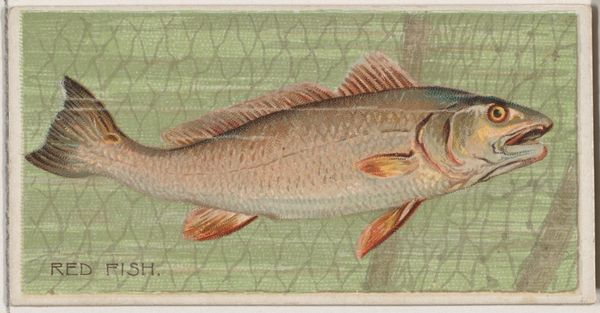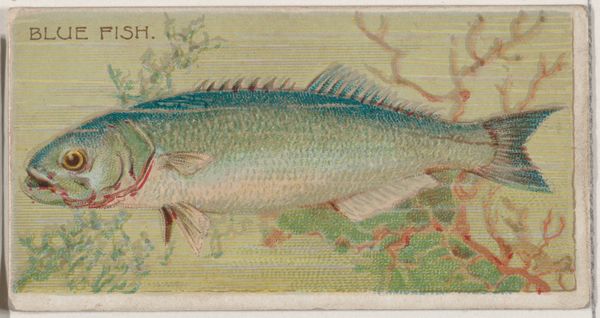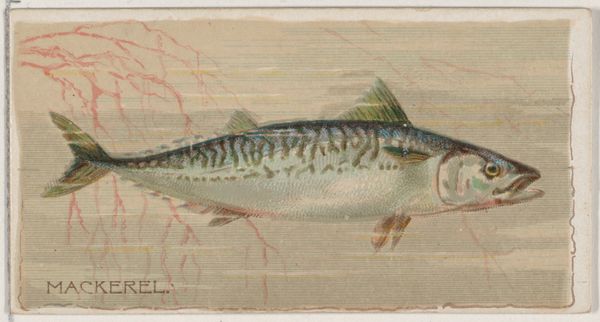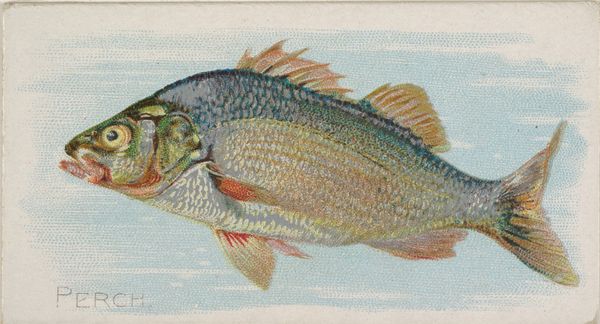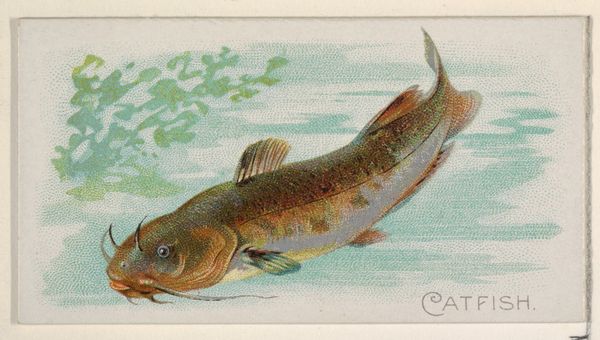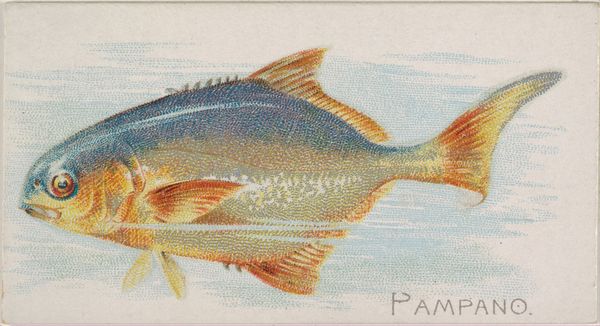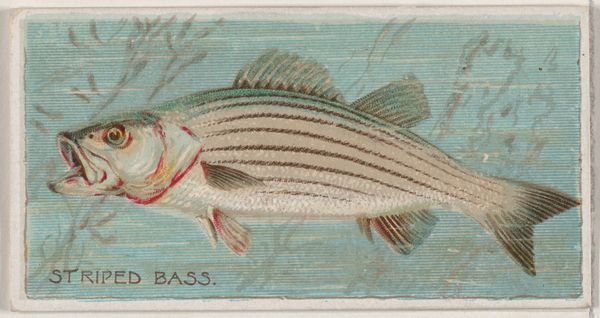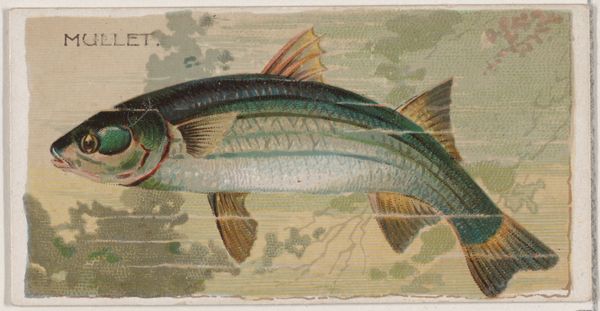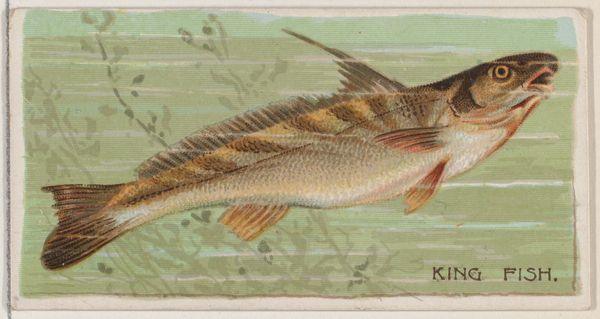
Pompano, from the series Fishers and Fish (N74) for Duke brand cigarettes 1888
0:00
0:00
Dimensions: Sheet: 1 7/16 × 2 3/4 in. (3.6 × 7 cm)
Copyright: Public Domain
Curator: Here we have a lithograph dating from 1888, "Pompano, from the series Fishers and Fish" created by Knapp & Company, originally made for Duke brand cigarettes. What are your immediate impressions? Editor: There's an arresting simplicity to it. The flattened perspective, the clear, vibrant colours... it feels at once naive and deeply satisfying as a composition. The geometry created between the fish and coral generates a kind of dynamic tension. Curator: Yes, the very deliberate color choices are striking. Consider the subtle tonal gradation from the bluish top of the fish to its golden underbelly. How the red coral highlights complement it, almost mirroring its curves. These were trade cards included with cigarette packs. They were hugely popular. Duke was one of the first to mechanize cigarette production and needed marketing material on a large scale. Editor: These cards created a relationship between commerce, art, and natural history. The pomapano transforms from sea creature to signifier of wealth. This image also touches upon how art reflects—or actively shapes—cultural narratives about nature, wealth and colonialism. Curator: Absolutely, this simple picture is more than it appears, there's the fascinating interplay of flatness and implied depth created by the background textures of coral and gridded water, and how that affects the viewing experience. Editor: True, and let's not forget these trade cards also had value beyond advertising. Consider their role in the development of popular science, offering accessible representations of nature in a period lacking mass visual culture. These cards were for the public to acquire and perhaps to study! Curator: Well said, this dialogue demonstrates how form and historical context intertwine. The beauty is a portal to the world it occupied. Editor: It's more that simple. I see how this lithograph reminds me how images always participate in systems of power. Art, like this fish, swims within larger currents.
Comments
No comments
Be the first to comment and join the conversation on the ultimate creative platform.

